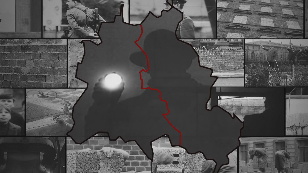
Cold War. Deutsche Welle Films
3
movies
Artdoc.Media
July 28, 2022
The Cold War set in even before the Second World War had ended. The divergent ideologies, interests and goals of the former allies, temporarily suspended in the battle against the Axis powers, became all the more evident after victory was sealed. Barely two years after the end of WWII in 1945, two politically and economically distinct blocs faced each other, led by the two superpowers of the US and the Soviet Union. And both sides were increasingly implacable.
We are still far from knowing everything that happened during the Cold War. In the bitter wrangling, both sides resorted to dubious means, some of which are still classified or unknown to this day. With the help of documents and personal stories, Deutsche Welle authors put together a more truthful account of this global conflict.
Films about the Cold War are available only on the territory of the Russian Federation.
When Lyon was occupied by German troops during the Second World War, Klaus Barbie was appointed head of the Gestapo secret police in the city. He would become feared for his brutality, responsible for the murder of hundreds of people in France – torturing many himself, and sending countless others to concentration camps. After the war Barbie returned to Germany and lived under an assumed name. Three years later – amidst growing tensions between the western Allies and the Soviet Union – he was recruited by the USA’s Counter Intelligence Corps (CIC). When France demanded his extradition, however, the Americans could no longer afford to retain Barbie’s services as an agent. But instead of handing him over, they gave him a new identity and allowed him to move to South America, where he could start a new life in anonymity. Barbie went to Bolivia, and subsequently built up a network of contacts to influential politicians and military leaders. He provided assistance for a series of bloody coups, and was also involved in numerous violent suppressions of trade unions and left-wing groups. West German intelligence then recruited him as an informant and an organizer of illegal arms exports. It was not until the early 1970s that Klaus Barbie was exposed as a war criminal by Nazi hunters Beate and Serge Klarsfeld. Even then it would take over another decade for the "Butcher of Lyon" to be extradited to France and put on trial.

3
Germany, 2019
28 min
Russian
After 1945 the former allies of the Second World War, the western powers and the Soviet Union, fought to impose their political systems and ideologies on Germany. In a divided Berlin, thousands of agents and spies from East and West fought the information war as closely and intensely as nowhere else. Former CIA agent Peter Sichel reports on the role of the intelligence agencies during the Soviet blockade of West Berlin and the airlift by the western Allies. Sichel was also involved in planning the spectacular tunnel built by the CIA to spy on the Soviet administration in East Berlin. A Russian intelligence expert reveals how the newly founded KGB tricked the Americans with the help of British double agent George Blake. The KGB also benefited from the cooperation provided by the powerful spy network of the East German state security, the Stasi. As a "man without a face", the head of Stasi foreign intelligence became a legendary figure. It took western intelligence decades to find out his name and identity: Markus Wolf. He helped the most famous East German spy, Günter Guillaume, to work his way up to the echelons of the West German government. Because the CIA was less efficient in classic espionage, the largest US intelligence agency, the NSA, installed a gigantic surveillance facility on West Berlin's Teufelsberg hill, in the process possibly gaining a decisive advantage in the Cold War, which came to an end with the fall of the Berlin Wall in 1989.

3
Germany, 2019
29 min
Russian
Starting in the mid-1950s, the United States and the Soviet Union, both world powers at the head of their own blocs, were locked into an unprecedented arms race that culminated in the so-called Cuban Missile Crisis in 1962. American aerial reconnaissance photographs showed that the Soviet Union was deploying medium-range missiles in Cuba. The very short flight time between the island and the mainland meant Moscow would easily be able to launch a nuclear strike on the USA.
This led to a fraught confrontation: To prevent the deployment of further missiles, the US Navy set up a naval blockade around Cuba, and Strategic Air Command was put on high alert as the stand-off threatened to escalate into a full-blown nuclear war. Feverish negotiations between Moscow and Washington finally succeeded in defusing the conflict.
But the crisis had a little-known backstory. Two years earlier, the USA had stationed its own medium-range missiles in the Mediterranean region, threatening Moscow, Leningrad and other targets in the Soviet Union. One place they were deployed was in Murgia, a sleepy region in southern Italy.

3
Germany, 2019
28 min
Russian
Tell about the movie